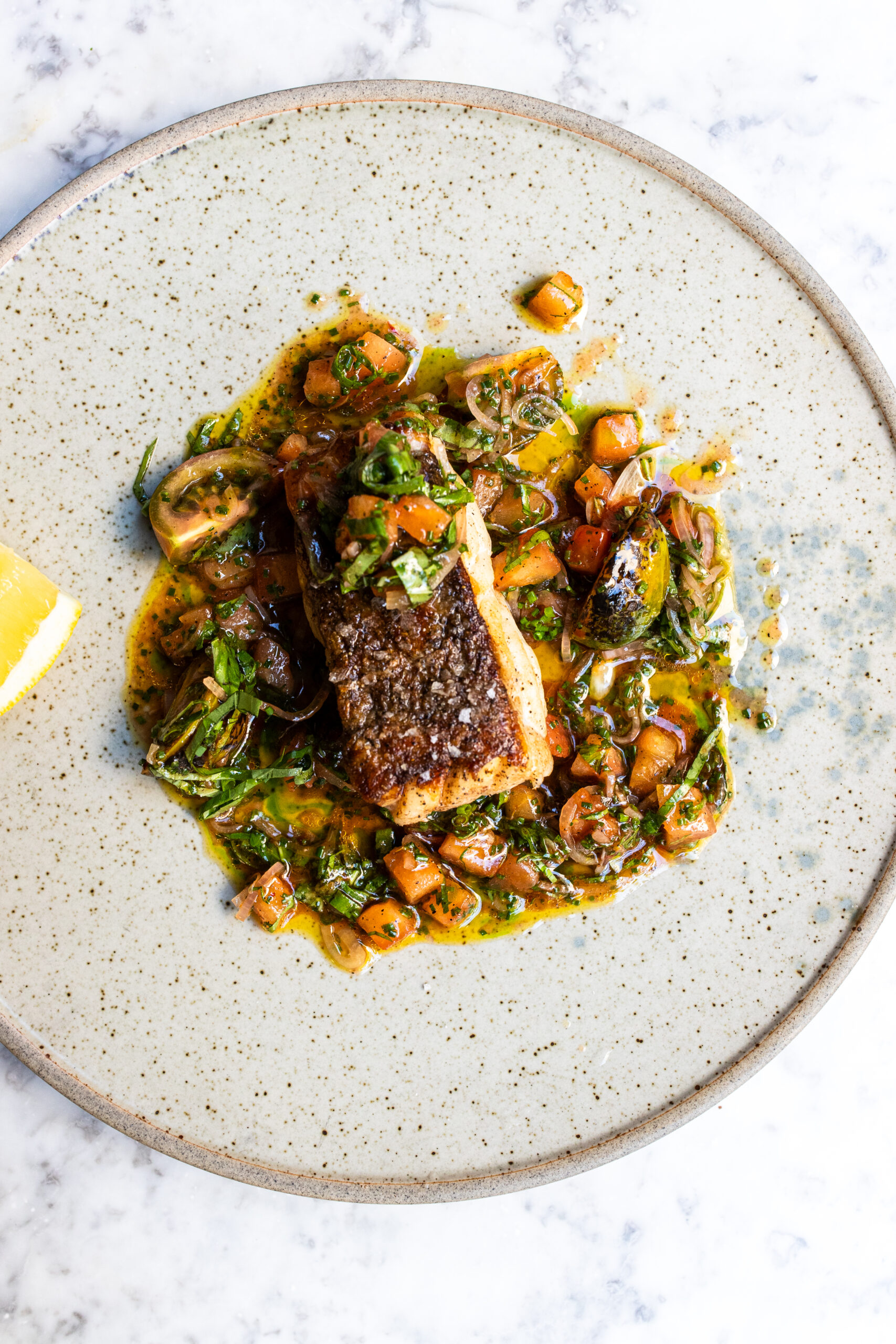
A Fresh and Flavourful French Classic
Introduction If you’re looking for a vibrant, easy-to-make sauce that adds a burst of freshness to your dishes, look no further than Sauce Vierge. This French classic has been beloved by chefs for decades due to its simplicity and incredible versatility. Ideal for elevating grilled meats, seafood, or vegetables, Sauce Vierge is the perfect addition to any home cook’s repertoire. In this article, we’ll explore the origins of Sauce Vierge, its core ingredients, and some of the best ways to use it in your everyday cooking.
What is Sauce Vierge?
Sauce Vierge, meaning “virgin sauce,” is a simple, uncooked sauce that originates from Provence, France. The sauce is composed of fresh ingredients, making it an excellent choice for those looking for light and healthy meal options. The key elements of Sauce Vierge are olive oil, fresh tomatoes, lemon juice, and herbs like basil and parsley. With its bright and tangy flavour profile, it has become a favorite accompaniment for a wide range of dishes, from grilled fish to pasta.
The History of Sauce Vierge
The origins of Sauce Vierge can be traced back to the traditional Mediterranean cuisine of southern France, where fresh ingredients are a cornerstone. Historically, the region’s cooking emphasised natural, unprocessed flavors, which is perfectly embodied in this “virgin” sauce. While it gained mainstream popularity in the 1980s through French chefs like Michel Guérard, the beauty of Sauce Vierge lies in its timeless appeal—it’s a sauce that has transcended culinary trends and remains a staple in kitchens worldwide today.
How to Use Sauce Vierge
The beauty of Sauce Vierge lies in its versatility. Here are a few ways you can use it:
- Grilled Fish or Seafood: The citrus and fresh herbs in Sauce Vierge are the perfect match for light, flaky fish such as sea bass, salmon, or cod. The sauce can also be drizzled over shrimp or scallops for a refreshing, gourmet finish.
- Roasted Vegetables: Roasted vegetables like zucchini, eggplant, and bell peppers come alive when topped with a spoonful of Sauce Vierge, adding a bright contrast to their rich, caramelized flavors.
- Pasta: Toss Sauce Vierge with freshly cooked pasta for a quick, vibrant, and healthy meal. You can even add a handful of fresh arugula or spinach for a light, nutrient-packed dinner.
- Grilled Meats: Whether it’s grilled chicken, lamb chops, or steak, Sauce Vierge can elevate your protein with a burst of tangy freshness. Simply spoon it over the meat as a finishing touch or serve it on the side as a dipping sauce.
- Toast or Bruschetta: For an easy appetizer, spoon Sauce Vierge over toasted bread or bruschetta. Add a sprinkle of feta or goat cheese to create an even more indulgent starter.
Why Sauce Vierge Is Perfect for Home Cooks
For those who enjoy cooking at home, Sauce Vierge is a game-changer. It requires no special equipment, minimal preparation, and uses common pantry staples, yet it adds a sophisticated touch to even the simplest meals. Whether you’re impressing dinner guests or preparing a quick weeknight meal, Sauce Vierge delivers restaurant-quality results without the fuss.
Conclusion
Sauce Vierge is more than just a sauce—it’s a testament to the power of fresh, simple ingredients in transforming a dish. Its versatility, ease of preparation, and vibrant flavours make it a must-have in any home cook’s recipe collection.
PrintSauce Vierge
- Author: Fallow
- Prep Time: 5 minutes
- Cook Time: 15 minutes
- Total Time: 20 minutes
- Cuisine: French
Ingredients
- 4 large tomatoes
- 6 to 8 smaller tomatoes
- 1 banana shallot extra finely sliced
- 2 cloves garlic, sliced
- 30g basil, cut chiffonade
- 20g chives, finely chopped
- 1 tbsp Chardonnay vinegar
- 2 tbsp tomato juice
- 2 tsp sriracha
- Zest & juice of half a lemon
- 4 tbsp rapeseed oil
- Salt and pepper to taste.
Instructions
- Bring a medium saucepan of water to the boil. Make an X on the bottom of each of the large tomatoes and place in the boiling water for 30 seconds. Remove from the water and place in a bowl of iced water.
- Remove the tomatoes from the iced water and use the marked X to peel back the skin of the tomato. Once peeled, slice the tomatoes into quarters and discard the seeds. Dice the tomato flesh into small cubes.
- Cut the other tomatoes into chunks or slices as you like and optionally char briefly with a blowtorch.
- Heat the rapeseed oil in a small frying pan, add the sliced shallots and garlic, a pinch of salt and some black pepper and soften gently for a few minutes to sweeten the flavours.
- Mix this into the chopped tomato basil, and chives.
- Season with the vinegar, lemon zest and juice, sriracha and tomato juice. Check the flavour and add salt and pepper if needed.

